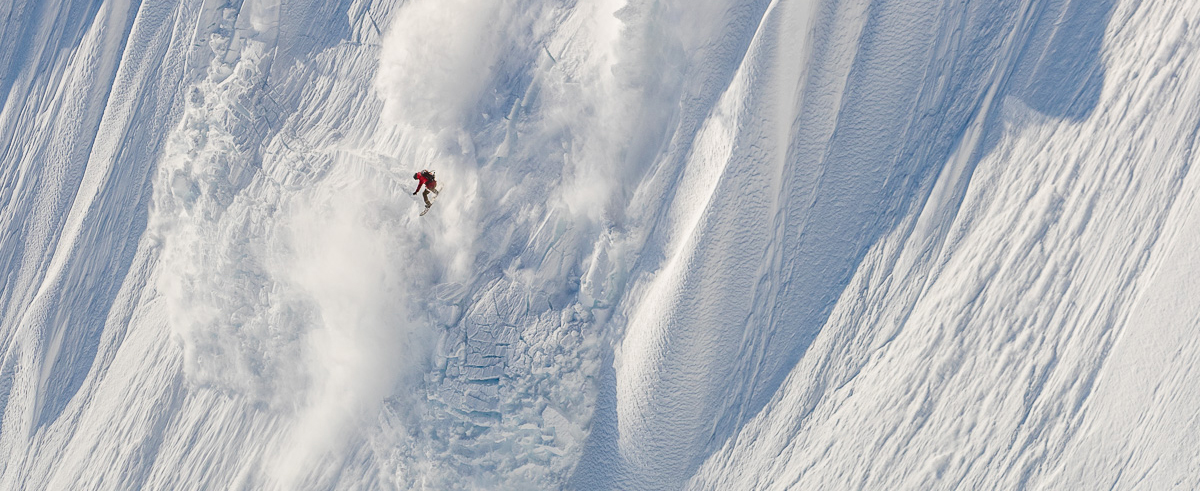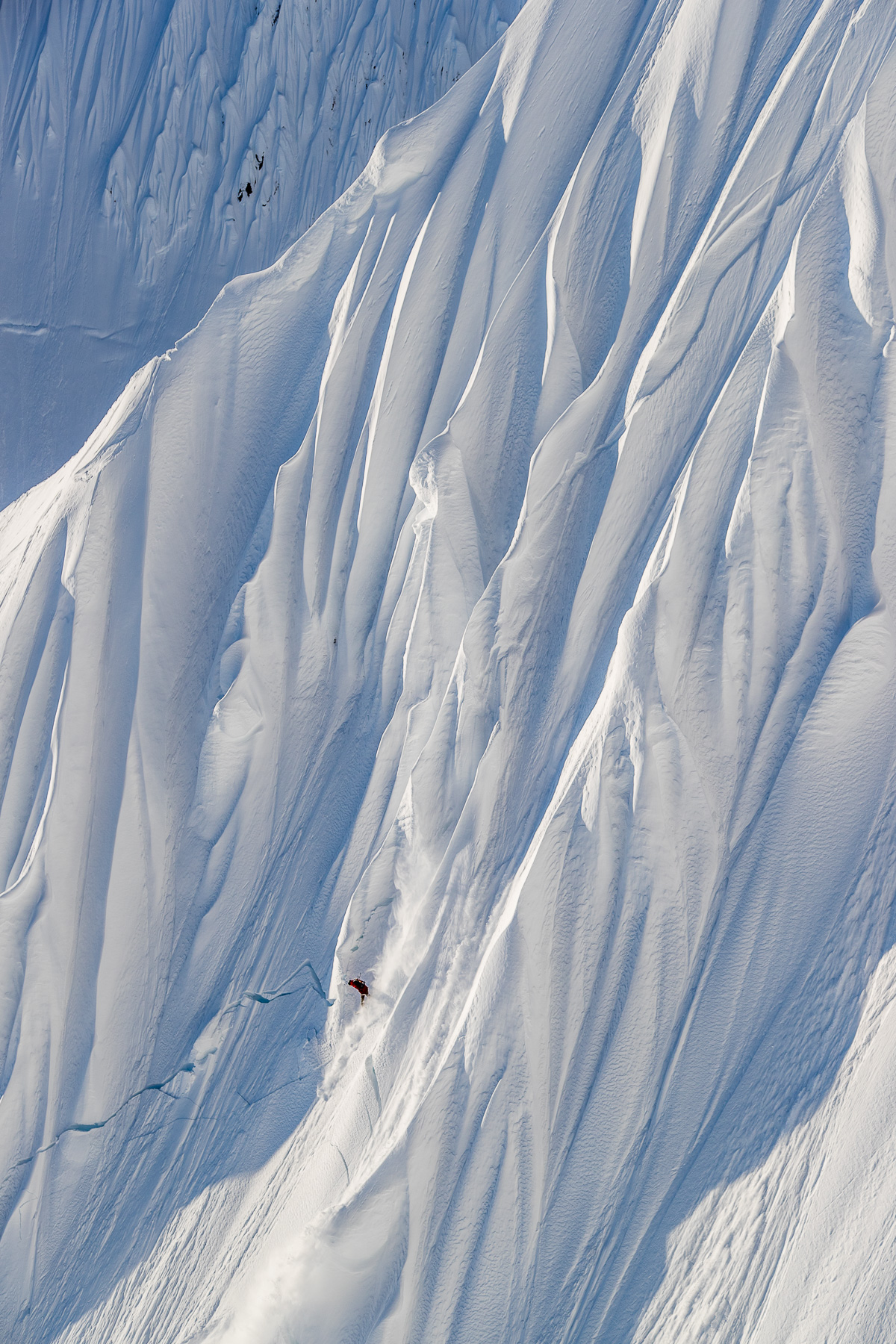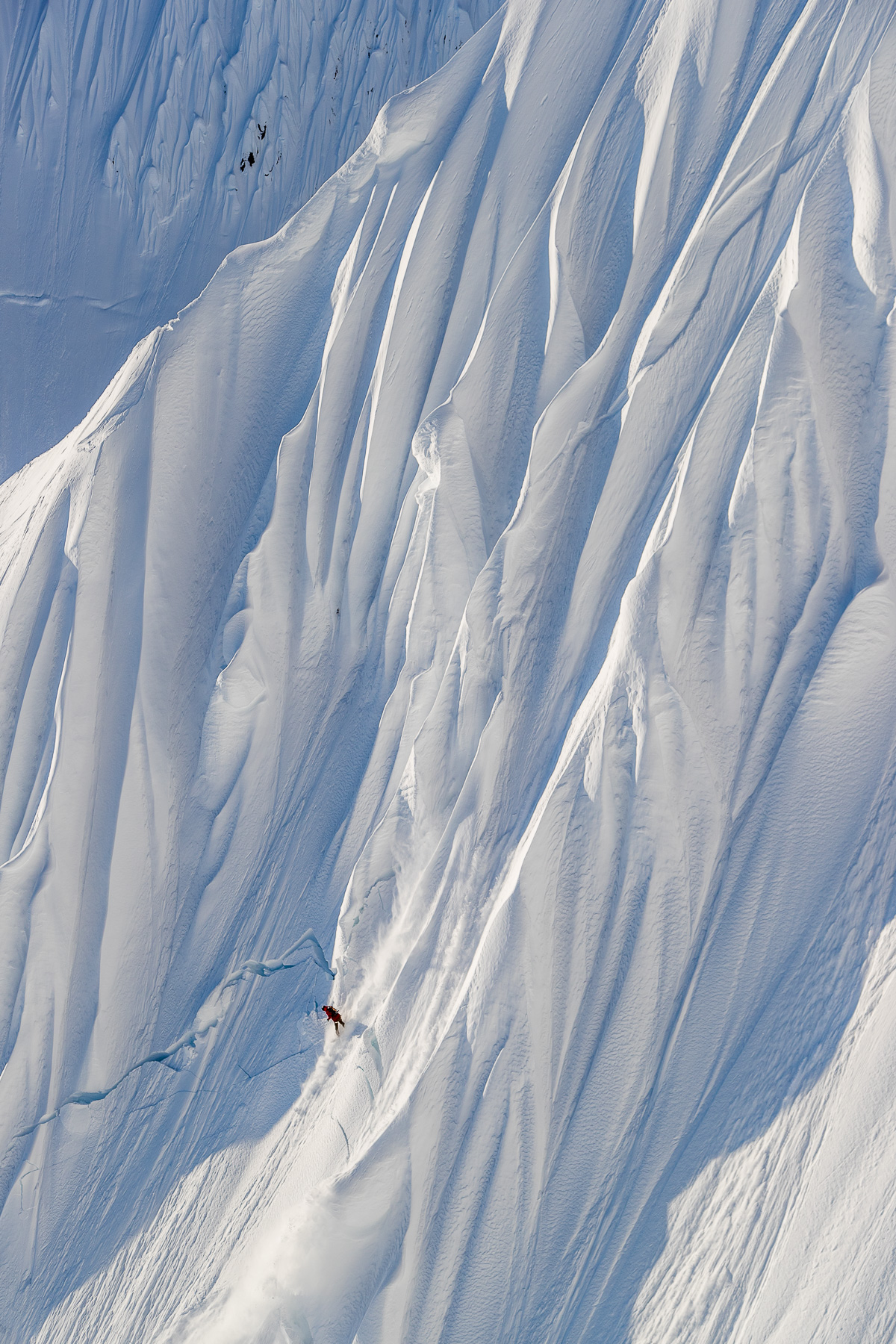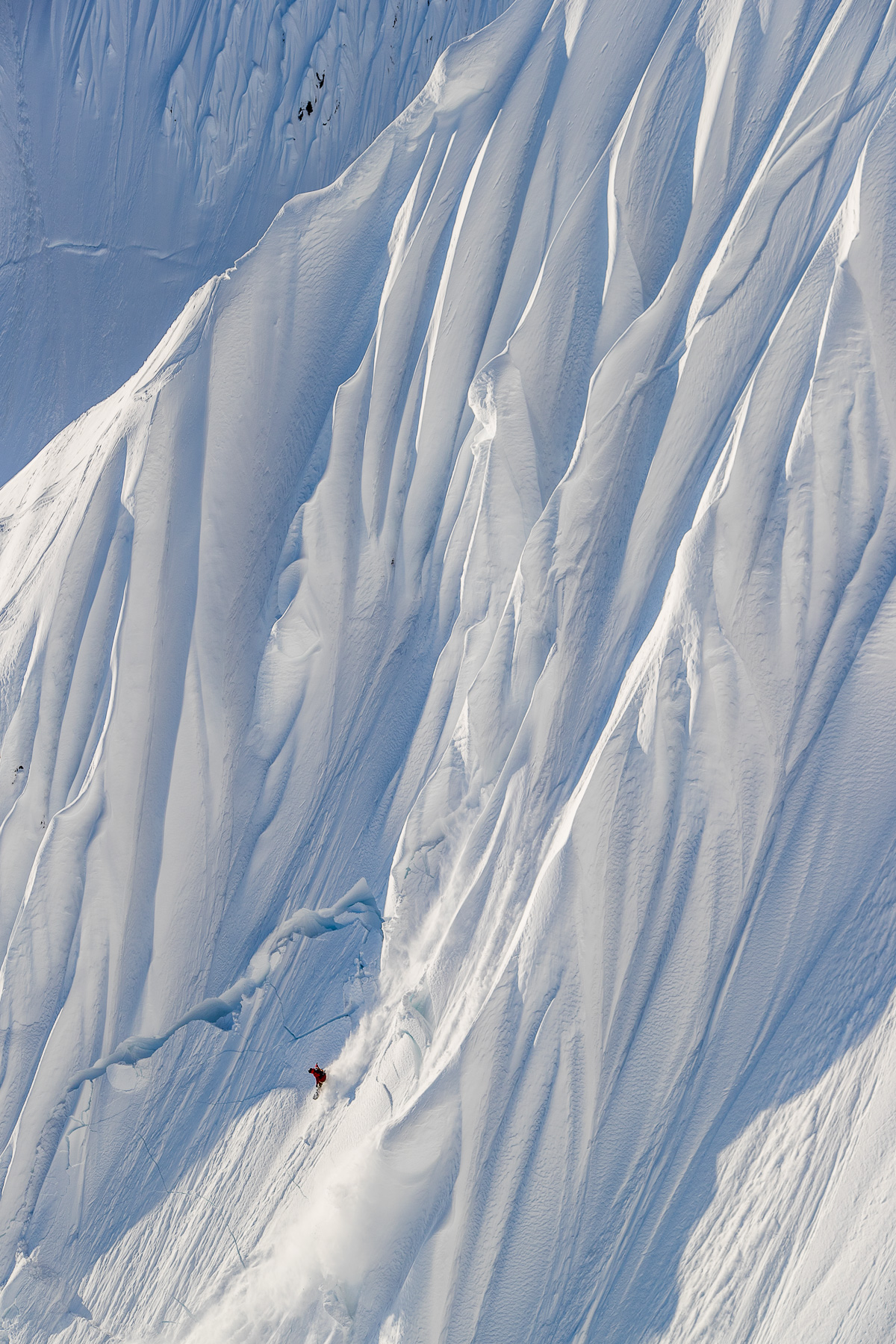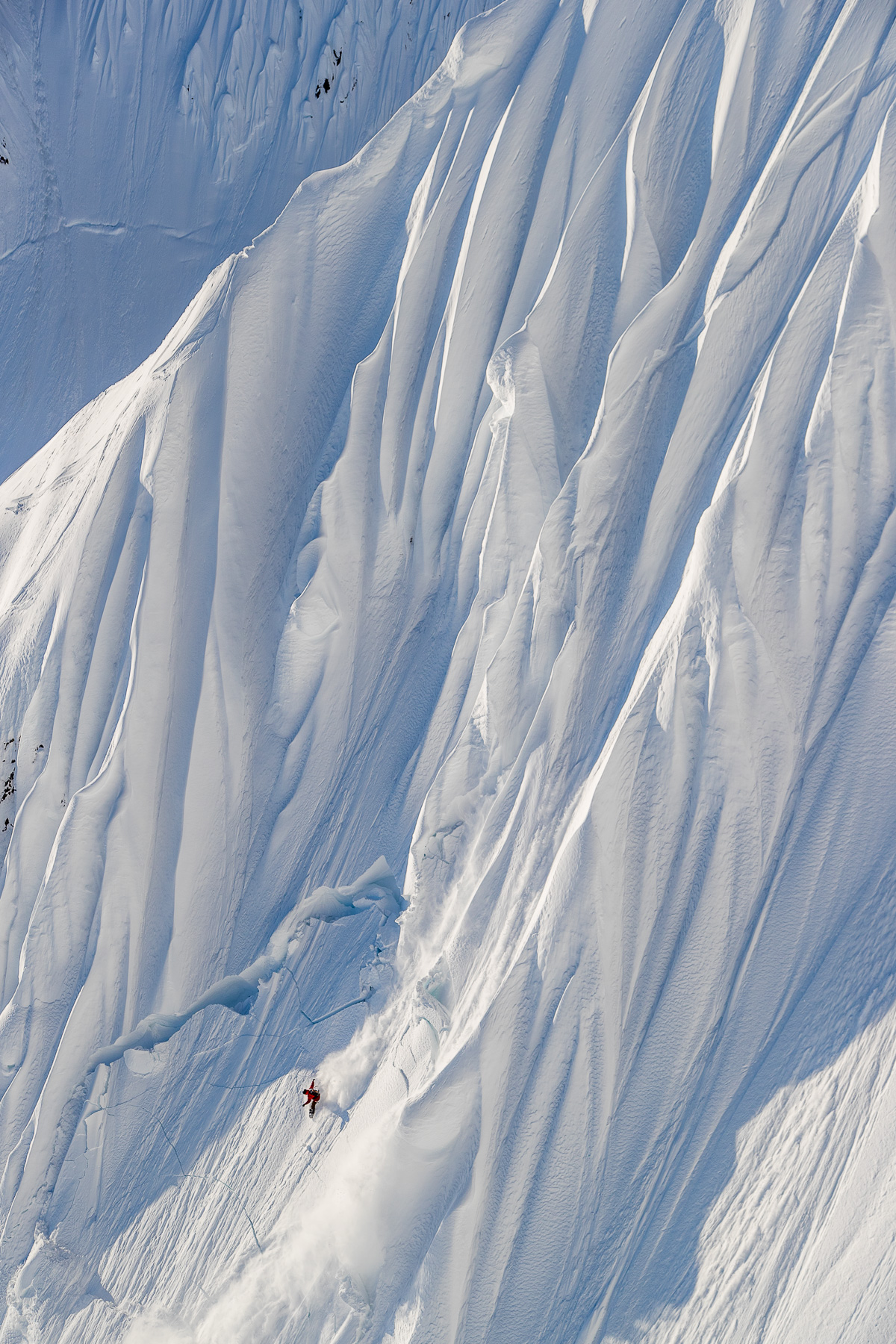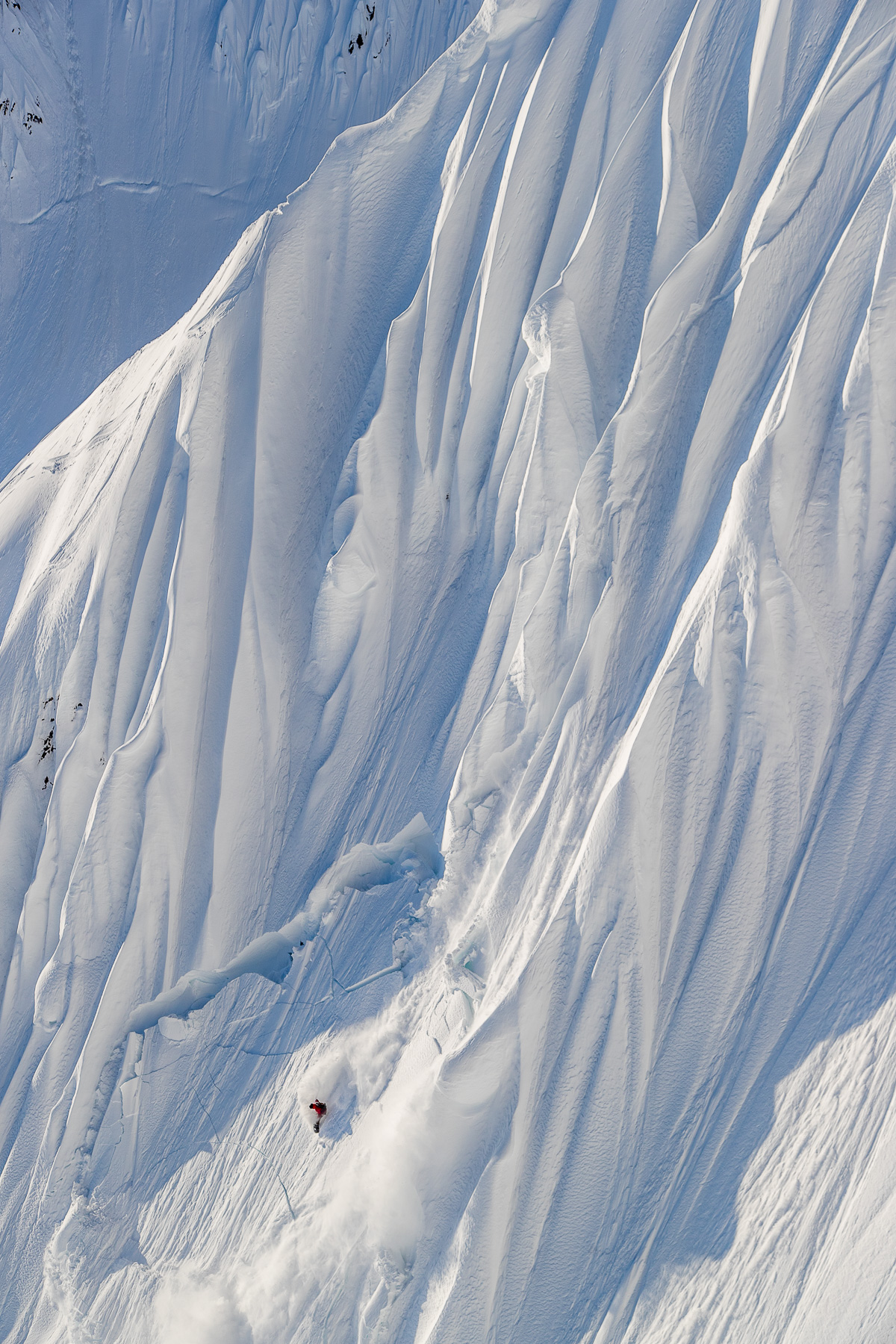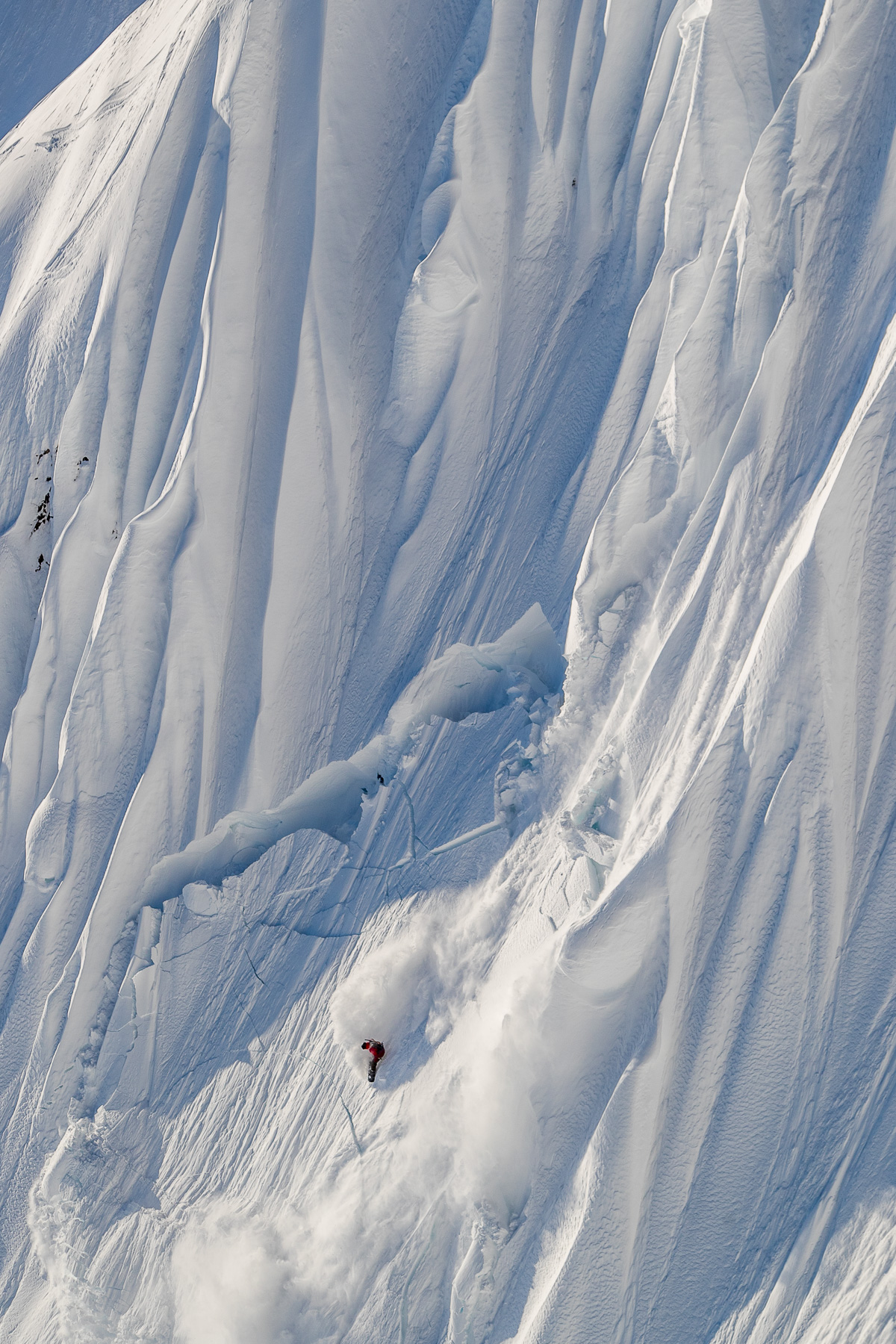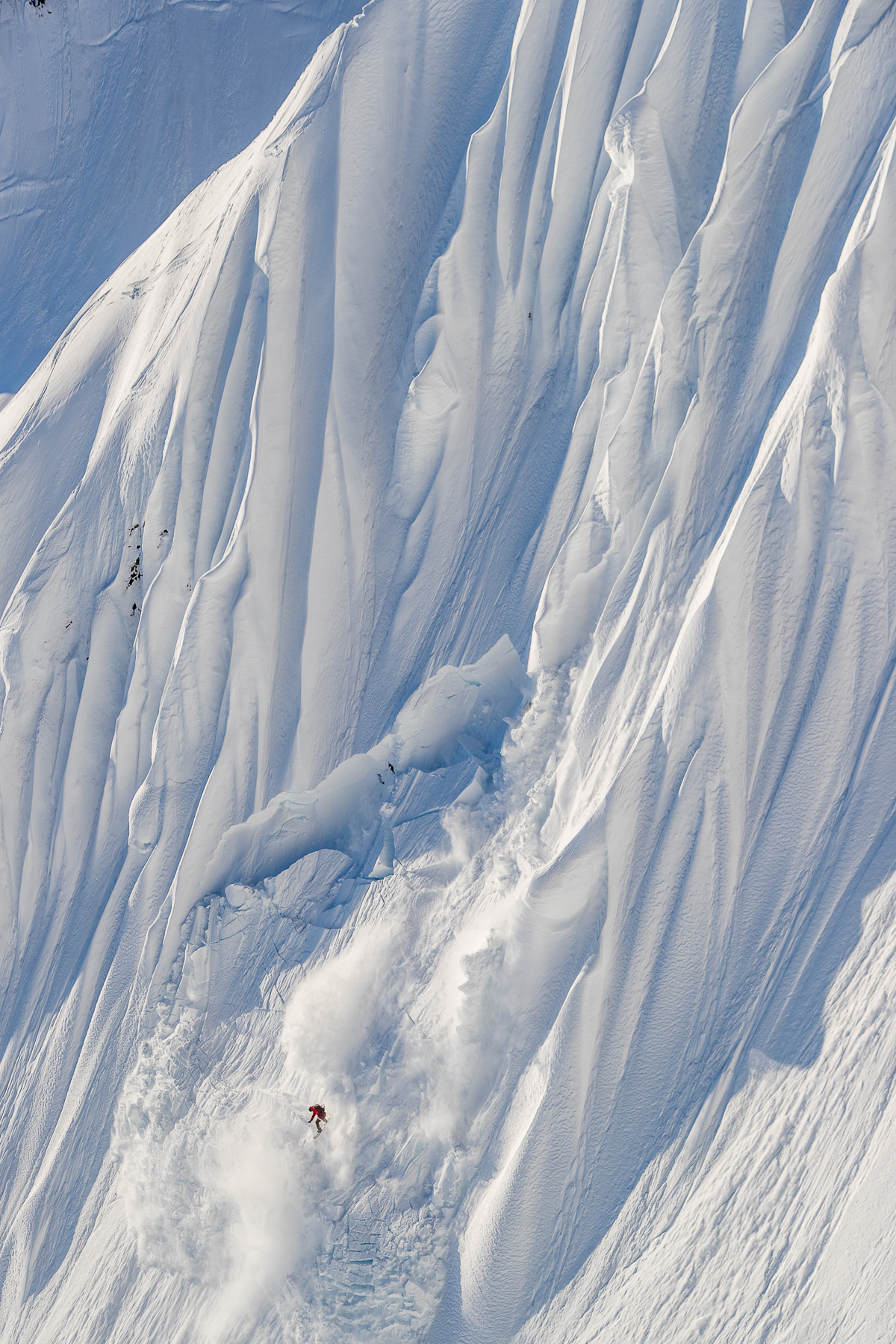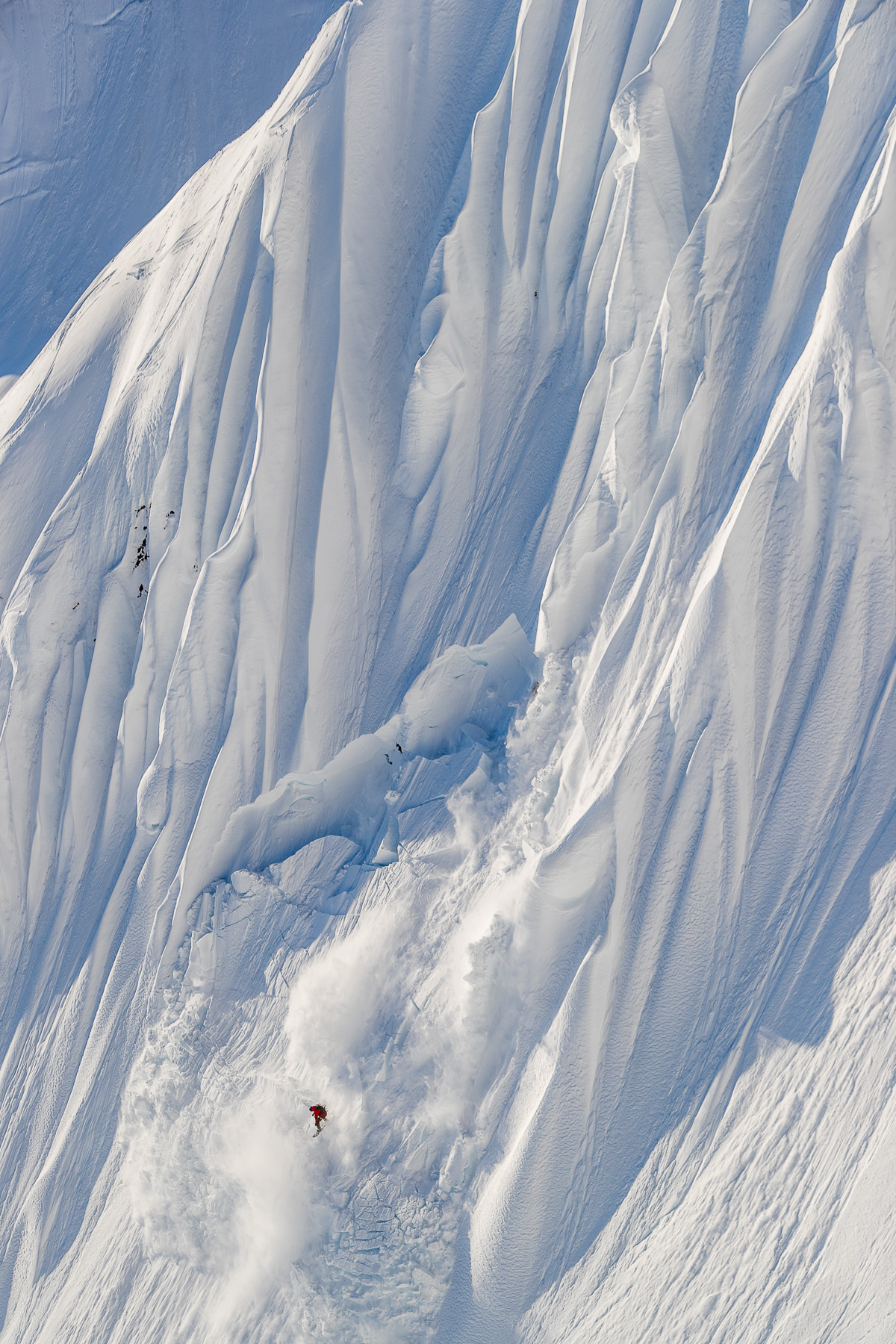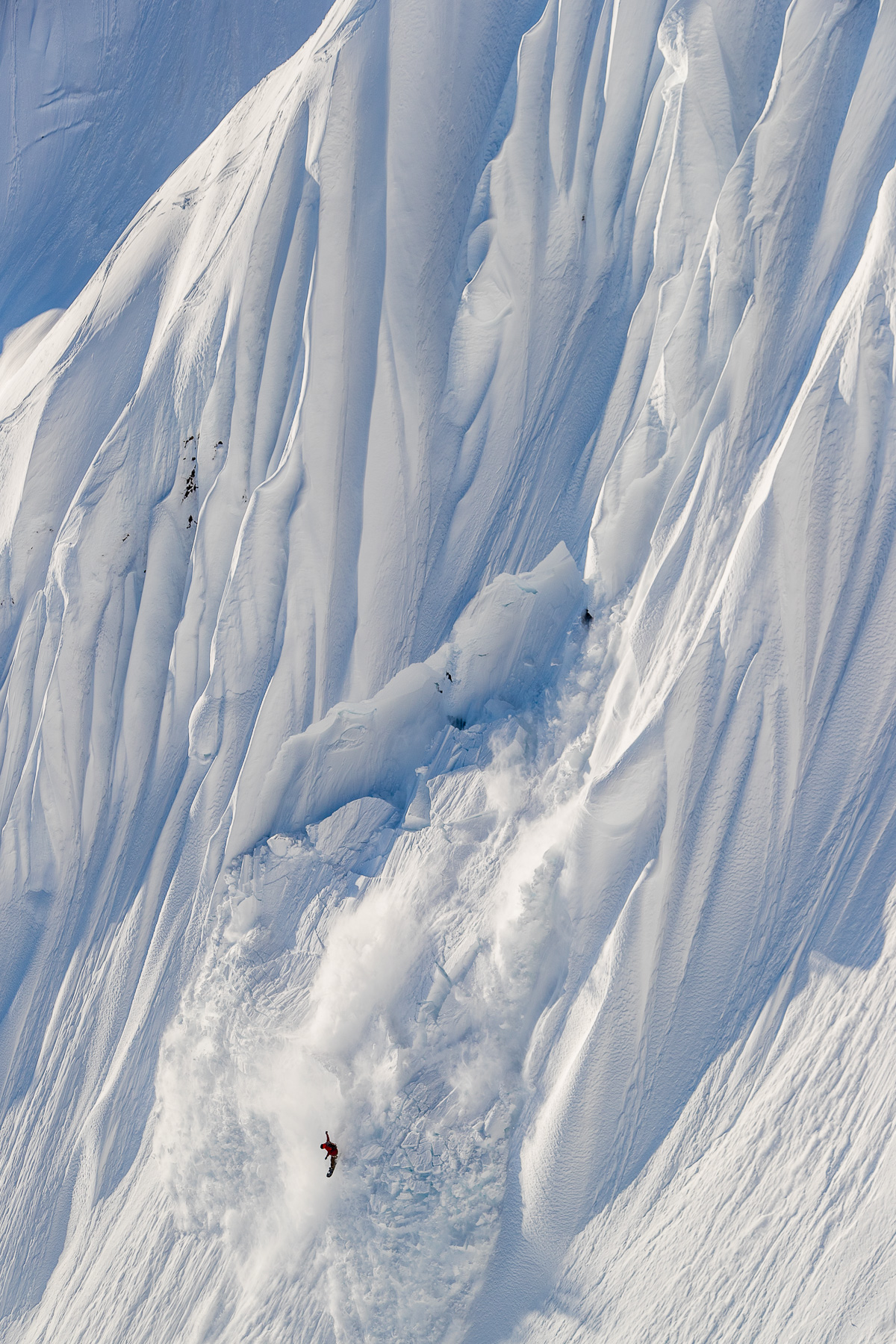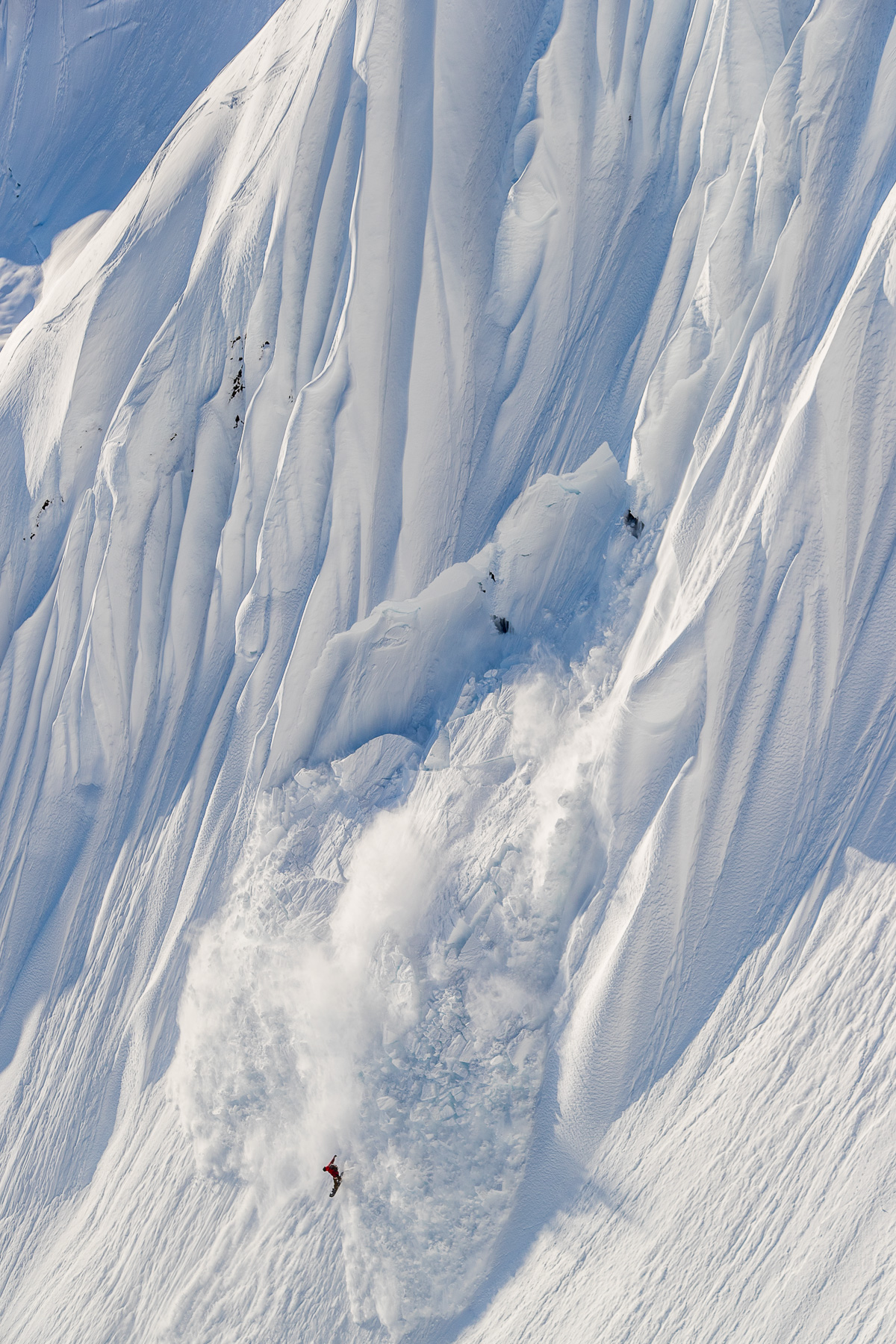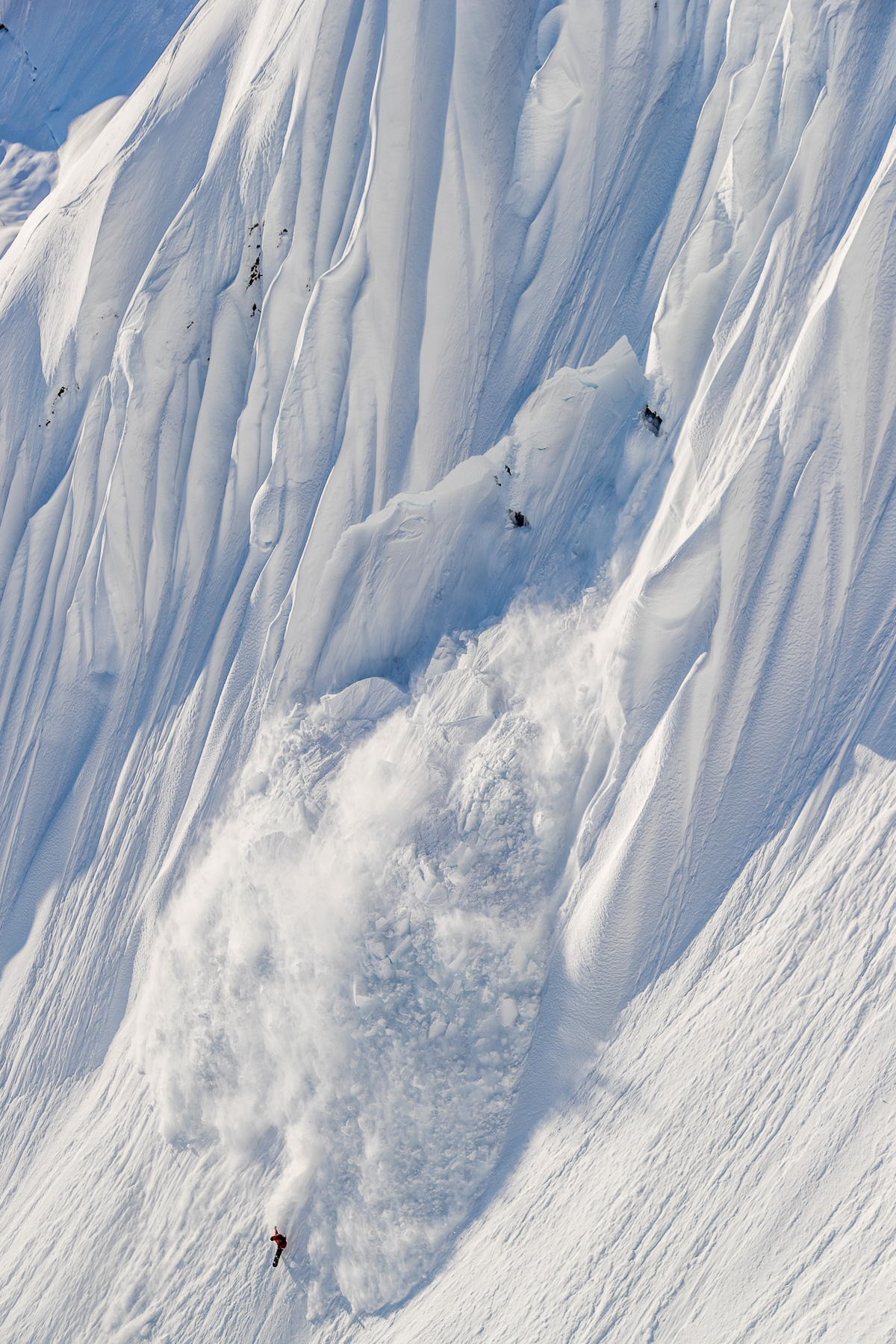Photo Feature
Issue 17.4 Covered
Ryland Bell and an Unexpected Avalanche
The cover of Issue 17.4 features Ryland Bell riding a steep spine at home in Haines, AK. At the bottom of the line, a slab avalanche pulled out, putting Ryland in an unexpectedly sketchy situation. Thankfully, he reacted quickly, knew his out and made it to safe ground. Check the sequence by photographer Will Wissman below, and read on to hear Ryland’s take on how it went down and the lessons he learned in his own words.
Hindsight is 20/20. When we got into the heli super early in the morning, the pilot mentioned that it was 3 degrees Celsius. It was above freezing, but we were thinking, “We’re still riding high north faces in the shade. The snow looks great, it’s probably fine.”
But in the end, that temperature spike was a problem—most likely just the fact that it hadn’t frozen overnight. It was April 29, spring had finally hit, and a deep layer that had been quiet most of the month came back to life.
We got an eight foot storm at the end of the month, so all the snow on the spines was new. Prior to that storm, it was super rotten sugar, most likely because it was a low snow year. The storm totally plastered the spines. The spines were in prime condition, but then, of course, that lower pocket was itching to go. We had been riding throughout the zone for three days, and everything was looking so good and locked in. There were no natural avalanches, nobody had popped any pockets. It was feeling really good and giving us this false sense of security, maybe. It was like, “Game on. We’re ready to pretty much go for anything.” Then it didn’t freeze overnight. We saw a natural avalanche on our way to the zone and discussed it, but assumed it was a bit older, maybe from during the storm.
Then with a line like that, it being so steep and all spines, you might put your guard down even more, ’cause you’re like, “Oh, well. This slope can’t hold any energy. It’s releasing energy constantly.” But of course, not that bottom pocket. Snow probably blew in, and as it was sluffing off the line, it was loading that pocket more and more. So it was this extra fat pocket of distributed snow on top of the rotten crap.
The heli couldn’t get me right to the top, so I had to get dropped off a little down the ridge, slide down, then hike back up. That felt really good. when you’re hiking in those lines, you get a good feel for the snow, ’cause you’re really penetrating into it. There I was floundering up these spines, putting some good pressure into it, and everything seemed really locked in.
So, I got up to the top. I couldn’t quite top out because it got too steep. Then I strapped in, was ready to go, dropped in. It was super steep, craziness—all instinct and survival, in a controlled fall, trying to manage gravity. After the top spines, there was one crux move where I had to bash through this one spine and get to the lowers. I made the transition, made the last spines and pointed out. Then all of a sudden, I was like, “What the fuck is going on here?”
It looked like the bergschrund was collapsing in front of me. In reality, I think it was a hard slab of snow that was sitting on the ‘schrund all broke in a chunk about 35 or 40 feet wide and six feet deep and started to roll downward. As that chunk released, it created this big, black chasm. I was like, “Oh my God, I have a bottomless pit that’s 30 feet wide opening in front of me. What do I do?” I ollied with everything I had. My knees were up at my neck. I still wasn’t thinking about avalanches. It happened in a millisecond. Then I cleared out and looked back and was like, “Those are big chunks. This is deep. This is crazy. I just dodged a bullet.”
I got down to the two skiers I was riding with. They gave me big hugs. Will came over the radio: “We’re done. Heli’s going home. This is it. Season’s over.”
I was still deaf with adrenaline. I was like, “I’m down to ride something else.” And Ted Purdy, the guide at SEABA, said, “No, dude. We’re not just done in this zone, we’re done for the year.” It took me a second to process that. Then I was like, “Oh yeah, of course. Thank you.”
Looking back, the warmth was the main thing we should have recognized. We were riding smaller slopes because of it, but we should have really paid attention to the fact that it didn’t freeze the night before and it had been well below freezing for the previous days of riding. Things were suddenly awake. That and seeing the natural slide should have made us think about the line a bit more. But even all that sluff that had been sent down the line didn’t trigger it, so it didn’t cross my mind that it would slide at the bottom.
In the end, I cut out to the rider’s left, through my sluff, to safety. Even though we talked about the warming, none of us fully registered what it meant—we justified our line choice as up high, in the shade, and still safe. But it wasn’t. It was the third day, we were excited to ride spines, had built up to the steep ones, and didn’t want to turn around. What we should have been saying was, “Wait a second, something’s different.”
